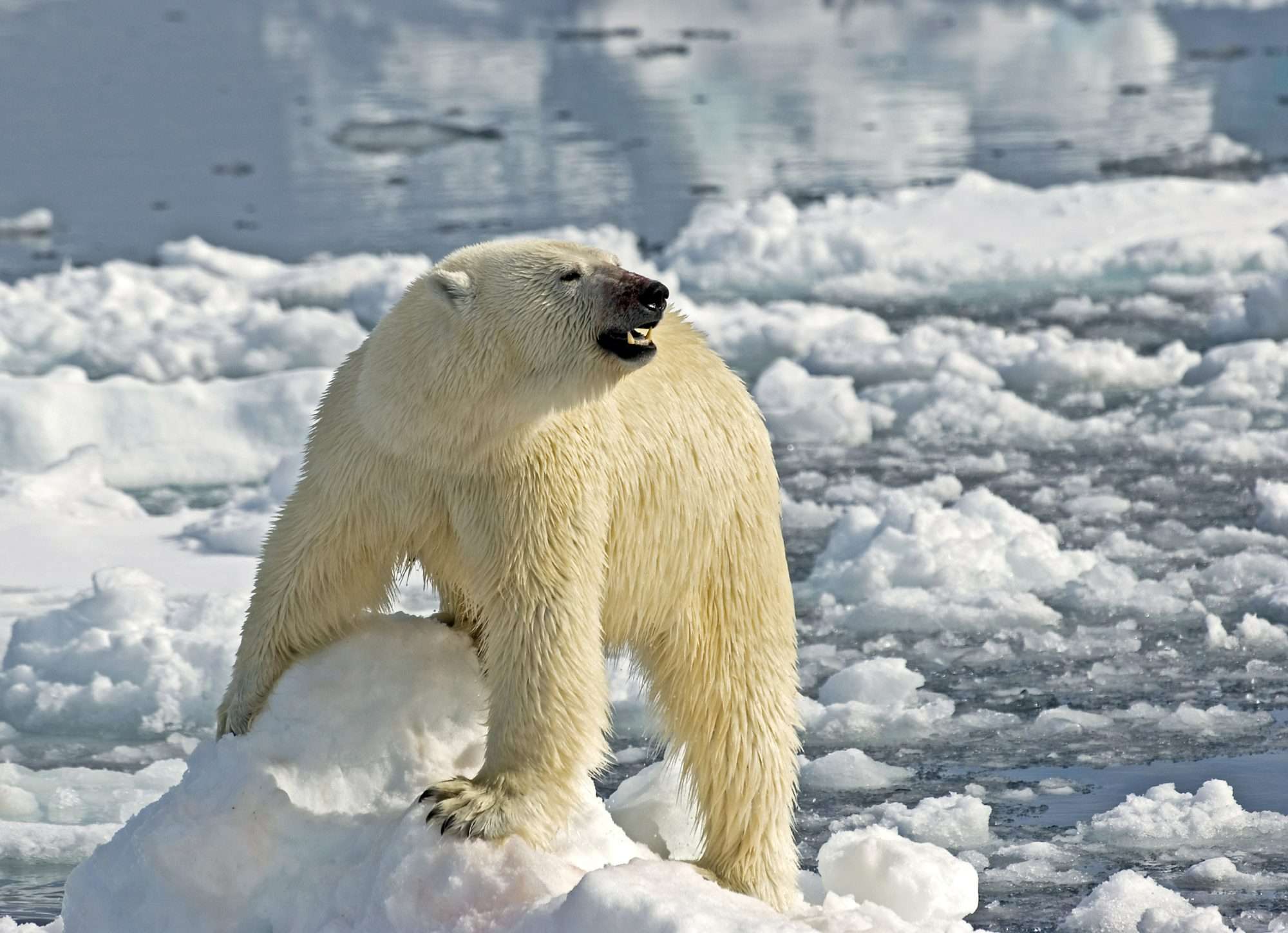
Ice caps are fascinating natural wonders that play a crucial role in our planet’s ecosystem. These majestic formations, made up of thick layers of ice and snow, cover vast expanses of land in the polar regions. While most people are familiar with the basic concept of ice caps, there are numerous surprising facts and details that can amaze and captivate us.
In this article, we will explore 20 intriguing facts about ice caps that will give you a deeper understanding of these icy wonders. From their importance in regulating global climate to their impact on wildlife and even their potential to reveal ancient secrets, there is much more to ice caps than meets the eye. So, grab your parka and join us on this icy adventure as we dive into the fascinating world of ice caps!
Key Takeaways:
- Ice caps are massive formations of permanent ice found in polar regions, playing a crucial role in regulating the Earth’s temperature and influencing global weather patterns.
- The melting of ice caps poses a grave threat to polar wildlife, contributes to rising sea levels, and serves as a key indicator of climate change.
Ice Caps Are Masses of Permanent Ice
Ice caps are massive formations of permanent ice found in polar regions. These vast expanses of ice encompass both land and sea, covering millions of square kilometers.
Ice Caps Play a Crucial Role in the Earth’s Climate
The ice caps act as a reflector, bouncing sunlight back into space and helping to regulate the Earth’s temperature. They also contribute to the movement of ocean currents, which affects global weather patterns.
Greenland Has the Largest Ice Cap in the Northern Hemisphere
The Greenland Ice Cap is the largest ice cap in the Northern Hemisphere, covering approximately 1,710,000 square kilometers. It contains enough ice to raise global sea levels by about 7 meters if it were to melt completely.
Antarctica Holds the Largest Ice Cap in the World
The Antarctic Ice Cap is the largest ice cap in the world, covering an area of around 14 million square kilometers. This massive ice sheet contains about 90% of the world’s total ice and 70% of its fresh water.
Ice Caps Are Melting at an Alarming Rate
Due to climate change, ice caps are rapidly melting. In the last few decades, scientists have observed significant decreases in the size and thickness of ice caps, leading to rising sea levels and disrupted ecosystems.
Ice Caps Are Home to Unique Ecosystems
Despite the extreme conditions, ice caps support a variety of life forms. From microscopic organisms to polar bears, these icy habitats host a diverse range of species adapted to survive in the cold and harsh environments.
The Melting of Ice Caps Threatens Wildlife
The shrinking of ice caps poses a grave threat to the survival of polar wildlife, such as polar bears, seals, and penguins. These animals rely on the ice for hunting, breeding, and resting, and their habitats are rapidly disappearing.
Ice Caps Are a Rich Archive of Earth’s History
The layers of ice in the caps contain valuable information about the Earth’s climate history. By analyzing ice cores, scientists can study past atmospheric conditions, trace the levels of greenhouse gases, and understand the impact of human activities on the environment.
Ice Caps Have Sparkling Blue Ice
When sunlight hits the ice caps, the dense ice absorbs almost all colors of the spectrum except for blue. This gives the ice its distinctive blue appearance, which is often breathtakingly beautiful.
Ice Caps Act as Natural Freshwater Reserves
The melting ice caps are a potential source of freshwater. As they melt, the freshwater released into the ocean can help balance salinity levels and provide a vital resource for communities and ecosystems around the world.
Ice Caps Influence Global Sea Levels
The melting of ice caps contributes to rising sea levels. As the ice melts, the water flows into the oceans, causing the water levels to increase. The loss of ice caps is a significant factor in the ongoing worldwide concern of sea-level rise.
Ice Caps Are Key Indicators of Climate Change
The changes in ice cap size and composition serve as essential indicators of climate change. Scientists closely monitor these changes to better understand the rate and impact of global warming on the environment and its subsequent consequences for humanity.
Ice Caps Could Lead to the Displacement of Coastal Communities
As sea levels rise due to the melting of ice caps, coastal communities are at risk of displacement. Low-lying areas and islands are particularly vulnerable, and the impact on human populations and infrastructure could be devastating.
Ice Caps Create Spectacular Icebergs
Ice caps generate enormous icebergs when chunks of ice break off and float away. These majestic ice structures can be truly awe-inspiring, showcasing the power and beauty of nature.
Ice Caps Regulate Earth’s Temperature
Ice caps play a crucial role in maintaining the Earth’s temperature equilibrium. They reflect sunlight back into space, helping to cool the planet and counteract the greenhouse effect caused by increased levels of carbon dioxide in the atmosphere.
Ice Caps Are Sources of Fresh Air
The ice caps store ancient air bubbles trapped within the ice. Studying these air samples provides insights into the composition of Earth’s atmosphere in the past, offering valuable information for climate scientists.
Ice Caps Provide Unique Research Opportunities
Ice caps offer scientists a unique environment to conduct research on a wide range of topics, including climate change, glaciology, biology, and geology. These studies help enhance our understanding of the Earth’s dynamics and its future trajectory.
Ice Caps Are Changing the Geography of Polar Regions
The melting of ice caps is altering the geography of polar regions. Previously impassable areas are becoming navigable, opening up new opportunities for shipping routes and resource exploration.
Ice Caps Have Inspired Art and Literature
The beauty and majesty of ice caps have inspired countless artists, writers, and photographers. Their awe-inspiring landscapes and dramatic transformations underpin numerous works of art, literature, and documentaries.
Preserving Ice Caps Is Essential for Future Generations
Protecting and preserving the ice caps is crucial for the well-being of future generations. By addressing climate change and reducing greenhouse gas emissions, we can help slow down the melting process and safeguard these vital ecosystems.
Conclusion
The ice caps are fascinating and critical parts of our planet’s ecosystem. They play a vital role in regulating global temperatures, providing habitats for various animal species, and maintaining the sea levels. With their unique characteristics and importance, it’s essential to understand the ice caps and the changes they are undergoing.
From surprising facts like the existence of hidden lakes beneath the ice to the impact of climate change on these delicate ecosystems, exploring the ice caps can teach us valuable lessons about the fragility of our planet and the urgent need for conservation efforts.
By studying and conserving ice caps, we can contribute to the protection of these incredible natural wonders and work towards a sustainable future for our planet.
FAQs
Q: How do ice caps form?
A: Ice caps are formed over thousands of years when snow accumulates and compresses into solid ice. Temperature, precipitation patterns, and glacial movements all play a role in their formation.
Q: What animals live in the ice caps?
A: Several species have adapted to the harsh conditions of ice caps, including polar bears, Arctic foxes, seals, and penguins.
Q: Why are ice caps melting?
A: The primary cause of ice cap melting is attributed to global warming and climate change. Rising temperatures lead to increased melting and destabilization of the ice caps.
Q: What are the consequences of ice cap melting?
A: Melting ice caps contribute to rising sea levels, leading to coastal erosion, flooding, and the loss of habitats for various species, both on land and in the water.
Q: Can we slow down or stop ice cap melting?
A: While the process of ice cap melting is primarily driven by global climate patterns, efforts to reduce greenhouse gas emissions and promote sustainable practices can help slow down the melting process and mitigate the impact of climate change.
Ice caps, nature's thermostats, face an uncertain future. Melting polar ice threatens to reshape coastlines and displace communities worldwide. Climate change's impact on these frozen wonders is undeniable, urging humanity to adapt and take action. Preserving ice caps is crucial for maintaining Earth's delicate balance and ensuring a habitable planet for generations to come. Explore more surprising facts about polar ice caps melting, the far-reaching effects of climate change and global warming, and the innovative strategies for climate adaptation.
Was this page helpful?
Our commitment to delivering trustworthy and engaging content is at the heart of what we do. Each fact on our site is contributed by real users like you, bringing a wealth of diverse insights and information. To ensure the highest standards of accuracy and reliability, our dedicated editors meticulously review each submission. This process guarantees that the facts we share are not only fascinating but also credible. Trust in our commitment to quality and authenticity as you explore and learn with us.


